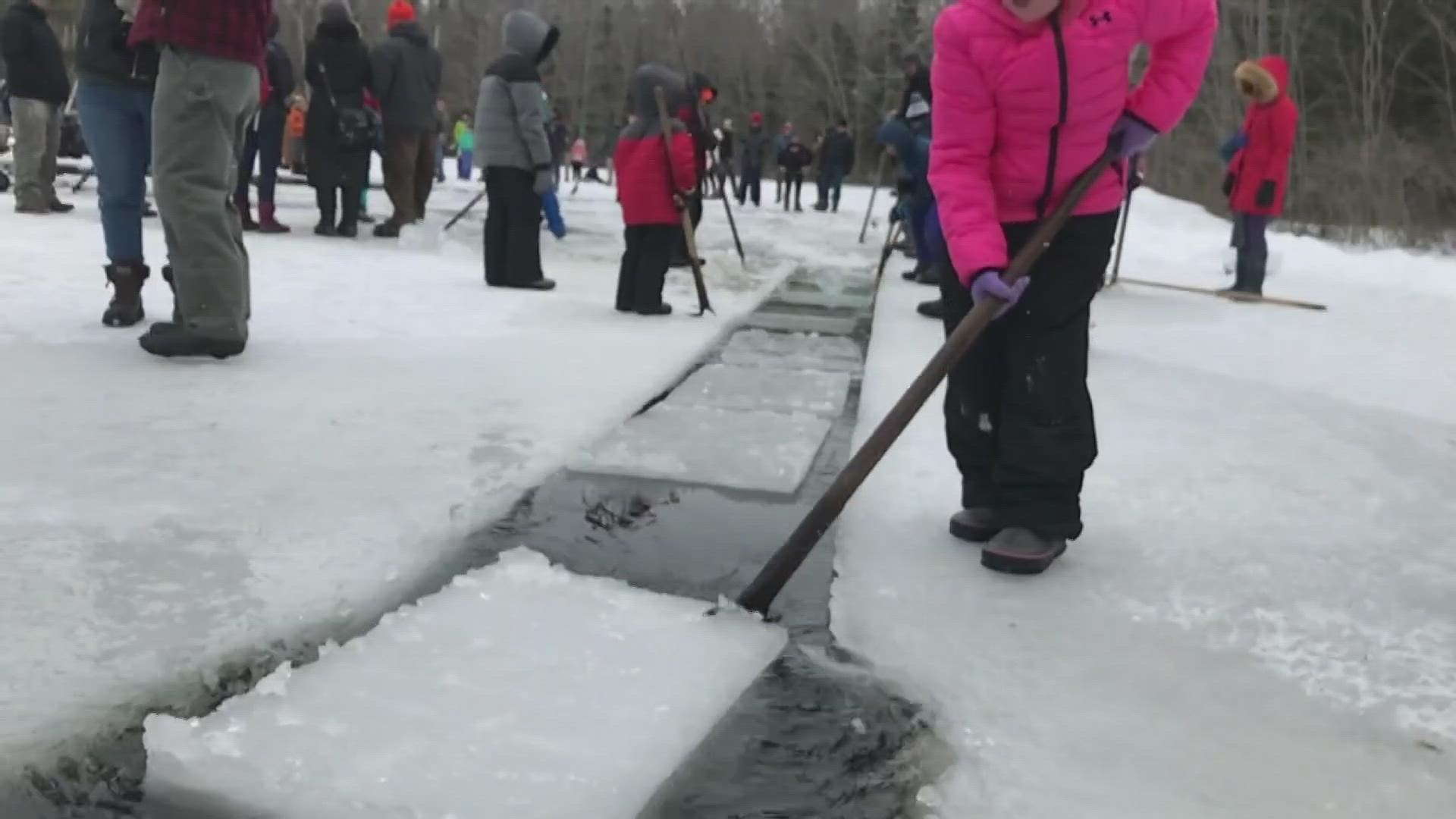SOUTH BRISTOL, Maine — The changing climate poses problems for many of Maine’s traditional winter activities, especially on the coast where temperatures have been warmest.
Snowmobiling, snowshoeing, and cross-country skiing have all been cut to a minimum in coastal areas because of too little snow and too much heat. Downhill skiing has only been possible where there is snowmaking.
The warming trend is also a threat to one of the celebrations of Maine history: the annual ice harvest at the Thompson Ice House Museum in South Bristol.
The event keeps an important part of Maine history alive and also preserves a tradition in the town, where ice was harvested on the pond for more than a century, with the heavy ice blocks being used to preserve fishermen’s catches.
Harvest leader Ken Lincoln, who learned the craft as a child with his father in the 1960s, said the work is done essentially the same way it always was, meaning primarily by hand.
“I just think it's unique. It was such a big industry,” Ken Lincoln said, explaining why he has been leading the harvest for so many years.
It's also a family tradition. His younger brother, Todd Lincoln, has worked on the harvest since he was a child.
“I remember standing out here pushing ice blocks all day, think I made $15 to $20 per day. Good money for a 10-year-old kid,” Todd Lincoln said.
The Lincoln brothers and a few other volunteers use a big, gas-powered saw on a sled to cut grooves in the ice that mark out the rows. Then the saw makes cross-cuts to mark out the individual blocks.
After that, antique hand saws take over. Volunteers, some of them school children, saw the blocks all the way through, and then chisels break them free. The blocks are pushed into open water, then guided into a channel leading to the ice house.
Inside the barn-like ice house, the blocks come hurtling in off a conveyor, and another team slides them around into orderly stacks. The building is insulated with sawdust, which keeps most of the ice from melting.
Crowds gather on harvest day to watch, and some pitch in to help.
Most likely don’t know that harvesting ice was once an essential business in Maine. Large ice houses stood along the Kennebec river, where ice was harvested and shipped by boat to cities in the northeast generations before mechanical refrigeration was invented. Many farms and towns around the state also harvested ice locally for preserving food.
A few of Maine’s north woods sporting camps still harvest some ice for their own use, and Ken Lincoln said some of the ice they cut and store away in South Bristol does get used.
“Sailboats love it. They’ll call up and want a block to go sailing [for] three or four days because this ice lasts three times longer than man-made ice. They chop it up in the coolers then go for a sail. And then, in the fall, moose hunters and bear hunters, if they have any luck, finish it off.”
Those who take a block of ice are asked to leave a donation, which Lincoln said some do. But the main purpose of the museum, and the annual harvest, is to preserve the history and the tradition, which still matters to people in the town.
Will the harvest happen this year?
As of Wednesday, Ken Lincoln said yes. There were seven inches of ice on the pond. That’s enough to hold the harvest, but barely. Temperatures in the 50s won’t help, but it is supposed to turn cold Friday night into Saturday, which they all hope will keep the tradition going.

